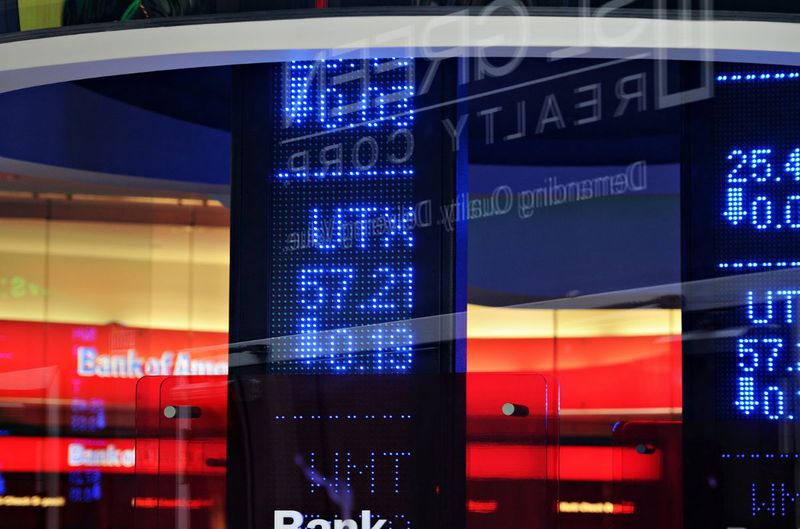
Asian stocks stuttered ahead of Fed: Frail yen in focus
Asian stocks stuttered on Wednesday ahead of a keenly-awaited policy decision from the Federal Reserve later in the day.

Reuters: Asian stocks stuttered on Wednesday ahead of a keenly-awaited policy decision from the Federal Reserve later in the day, while the yen was stuck near one-year lows against the dollar, keeping markets on edge for possible intervention by Tokyo.
GLOBAL MARKETS: ASIAN STOCKS STUTTERED
MSCI’s broadest index of Asia-Pacific shares outside Japan was 0.13% lower, starting November in a sombre mood after clocking three straight months of losses. Japan’s Nikkei was 2% higher. China shares eased 0.15%, while the Hong Kong’s Hang Seng Index fell 0.75%. China’s factory activity unexpectedly contracted in October, a private survey showed on Wednesday, adding to a downbeat official manufacturing survey the previous day and raising questions over the country’s fragile economic recovery at the start of the fourth quarter.
Market focus in Asia though was firmly on the yen in the wake of the Bank of Japan’s decision to tweak its bond yield control policy again on Tuesday, further loosening its grip on long-term interest rates. The move drove a broad slide in the yen on Tuesday, tumbling to a one-year low against the dollar and touching a 15-year low against the euro as investors had expected a bigger BOJ step towards ending years of massive monetary stimulus. “The market has seen the tweak to a flexible regime as clear dovish development,” said Chris Weston, head of research at Pepperstone. “Once again market players have been left frustrated by the lack of urgency shown by the BOJ, and either closed yen longs or flipped into outright yen shorts.”
ALSO READ: Who is the richest person in the world today? Top 10 list – 1 November 2023
The sharp drop in the yen prompted a fresh warning from Japan’s top currency diplomat Masato Kanda that authorities were on standby to respond to recent “one-sided, sharp” moves in the currency. The yen strengthened 0.27% to 151.26 per dollar following the comments but remained close to one-year lows of 151.74 it touched on Tuesday. ING economists said the market will likely further test levels above the 150 region now that it has been breached with no official response. “The next critical level could be 152 in the short-term, but could go beyond that depending on U.S. data outcomes and FOMC decisions.”
Overnight, Wall Street’s main indexes ended higher, with investors looking ahead to the Fed policy decision later in the day, when the central bank is expected to stand pat on interest rates. Traders will scrutinize what Fed Chair Jerome Powell says in his post-policy meeting comments to gauge the path of interest rates and how long rates will stay elevated. Erik Weisman, chief economist and portfolio manager at MFS Investment Management, said the Fed will keep the option of future rate hikes firmly on the table until the labour market cools considerably and inflationary pressures ease.
“Chairman Powell will also argue that the lagged effects of past hikes have not fully impacted the economy and that patience is prudent.” Treasury yields remained elevated, with the yield on 10-year Treasury notes up 5.4 basis points at 4.929%. The yield on the 30-year Treasury bond was up 6.6 basis points to 5.090%. Against a basket of currencies, the dollar was up 0.056% at 106.73. Sterling was last at $1.2136, down 0.13% on the day. Oil prices inched higher ahead of the Fed decision, with the market keeping a close eye on the latest developments in the Israel-Hamas conflict. U.S. crude rose 0.28% to $81.25 per barrel and Brent was at $85.32, up 0.35% on the day. Gold prices were slightly lower, with Spot gold easing 0.2% to $1,978.99 an ounce, remaining below $2,000 level it breached last month due to strong safe asset rally.
ALSO READ: Fuel price: How much you will pay for petrol and diesel from TODAY
BRITISH POUND
Reuters: The British pound was strengthening against a weaker dollar on Tuesday but still on track for its third straight monthly drop as traders looked ahead to the Bank of England’s policy announcement on Thursday. Britain’s central bank is expected to keep interest rates unchanged at a 15-year high of 5.25% when it announces policy this week, amid signs that the labour market is cooling even as it faces an inflation rate more than three times as high as its target. The British Retail Consortium said annual shop price inflation dropped to 5.2% from 6.2% in September, its weakest since August 2022, supporting the view that the BoE will refrain from policy changes at this meeting. “The BoE won’t hike this time around,” said Dane Cekov, senior macro and FX strategist at Nordea.
Money market traders are betting that the BoE is finished with rate increases in this tightening cycle, with rate cuts priced towards the end of next year. Most economists also said the BoE is likely to be done with tightening and will leave the Bank Rate at 5.25% later this week, a Reuters survey found. By 1126 GMT, the pound was up 0.2% versus the dollar at $1.2190 but was still on track for a third consecutive monthly loss. Sterling was last at 87.48 pence per euro, down around 0.3% on the day.
Against the yen, the pound was up 1.4%, on track for its biggest daily gain against the Japanese currency since July, after the Bank of Japan made only a small tweak to its yield curve control policy, sending the yen tumbling. The BoJ maintained its -0.1% target for short-term interest rates and that for the 10-year government bond yield around 0% set under its yield curve control, but redefined the 1.0% limit as a loose “upper bound” rather than a rigid cap. Markets were now on the lookout for potential intervention in the Japanese yen, which could have knock-on implications for other currencies.
ALSO READ: Rand report: Minor strength observed from the rand
“I think the only thing that is stopping the yen from being weaker is the threat of intervention from authorities,” Nordea’s Cekov said. “Markets will continue to test how willing the Japanese government is to protect the yen.” Meanwhile, the dollar index, which measures the currency against six major peers including the pound and the yen, was last down 0.2% at 105.95, but in close proximity to an 11-month high of 107.34 hit earlier this month.
U.S. DOLLAR
FXStreet: USD/JPY trades around 151.20 during the Asian session on Wednesday, pulling back from the yearly high marked after the Bank of Japan removed the 1% ceiling for the 10-year government bond yield on Tuesday. Following the adjustment to the yield curve control, BoJ Governor Kazuo Ueda adopted a notably dovish stance. He expressed apprehensions about inflation not definitively reaching the BoJ’s long-term targets. Japan’s Chief Cabinet Secretary, Hirokazu Matsuno, engaged in some verbal intervention to bolster the yen. He stressed the importance of currencies moving in a stable manner that reflects fundamentals, expressing disapproval of rapid foreign exchange fluctuations. While refraining from commenting on specific Forex levels, Matsuno did not rule out the possibility of taking measures to address disorderly FX movements.
Moreover, the unexpected decline in China’s Caixin Manufacturing Purchasing Managers’ Index to 49.5 in October, down from September’s expansion at 50.6, as disclosed in the latest Wednesday data, has added pressure on the Japanese Yen. The US Dollar Index is on a two-day upward trajectory, buoyed by elevated US Treasury yields. The index trades higher near 106.70 at the time of writing. Additionally, the market anticipates the imminent policy decision from the US Federal Reserve, pointing toward the central bank maintaining its current monetary policy stance in the Wednesday meeting.
ALSO READ: Will SASSA social grant cards STAY VALID?
Investors will closely watch the Federal Open Market Committee’s post-meeting communication, eager for insights that could help gauge the potential path of interest rates. The data-driven considerations for December add an extra layer of anticipation to the market dynamics. Traders will also watch the pivotal indicators like the US ADP Employment Change and ISM Manufacturing PMI for October in the North American session.
SOUTH AFRICAN RAND
Reuters: South Africa’s rand strengthened against the dollar on Tuesday, as investors awaited the government’s mid-term budget statement. At 1553 GMT, the rand traded at 18.7425 against the dollar, 0.6% stronger than its previous close after firming 1% earlier. “The rand has seen some mild strength recently, with the Medium-Term Budget Policy Statement due today, and available data on the fiscal half year showing that expenditure is at 51% of the budget estimate,” said Investec chief economist Annabel Bishop in a research note.
The main economic event in South Africa will be Wednesday’s MTBPS, which updates economic forecasts, adjusts the budget and makes emergency changes to spending. “Markets and the credit rating agencies will be watching the debt projections, with downgrades a risk on markedly higher debt revisions,” Bishop added. Shares on the Johannesburg Stock Exchange fell, with the blue-chip Top-40 index closing about 0.6% lower. Revenue service figures earlier showed South Africa recorded a trade surplus of 13.14 billion rand ($701.96 million) in September. South Africa’s benchmark 2030 government bond was stronger, the yield down 3 basis points at 10.675%.
ALSO READ: Futurelife invests R75 million in modern manufacturing facility
Published by the Mercury Team on 1 November 2023
For more news on global and local market performance, follow our business and finance page.
